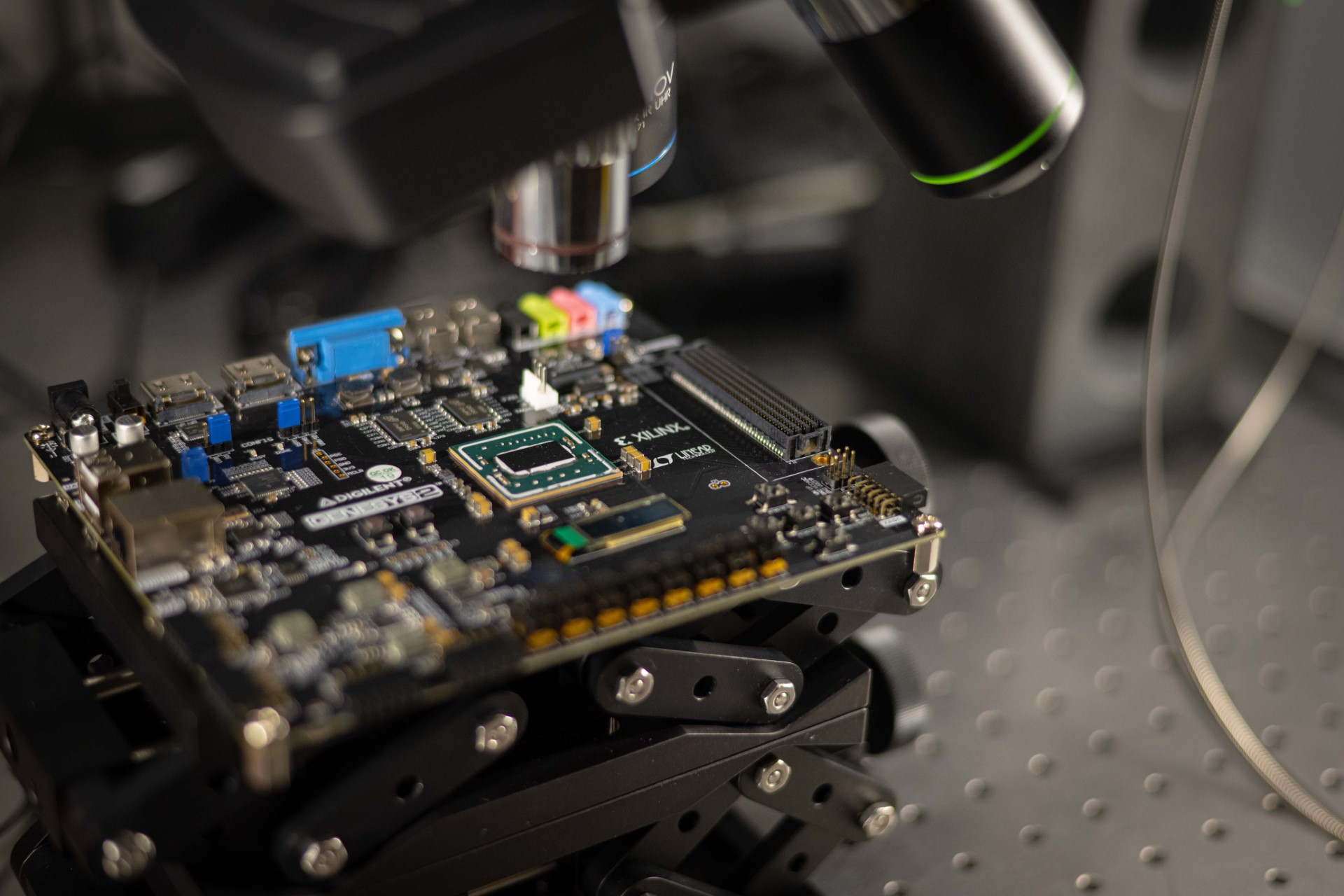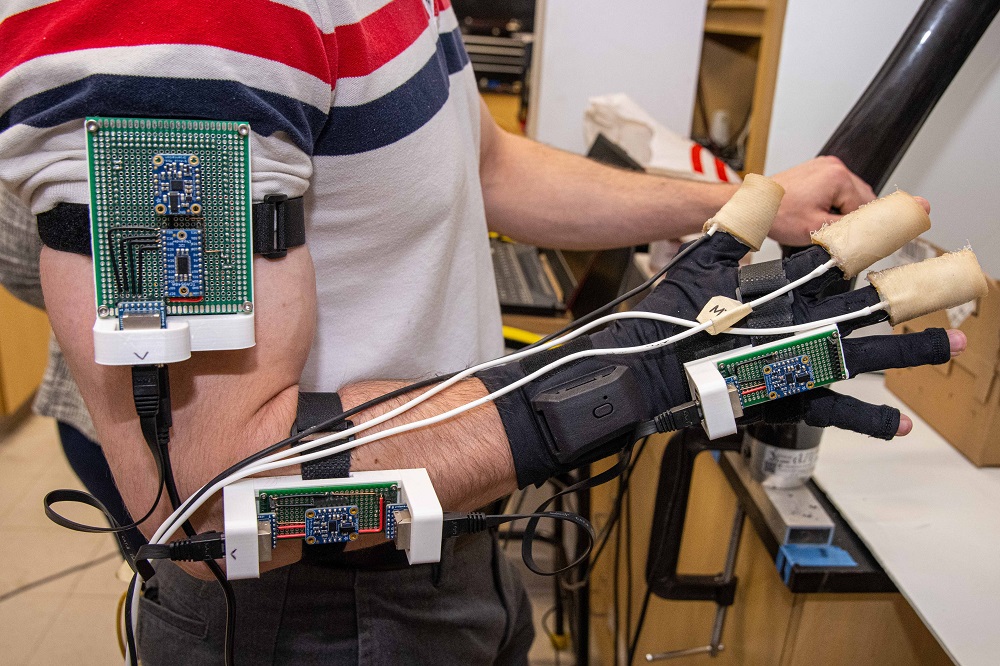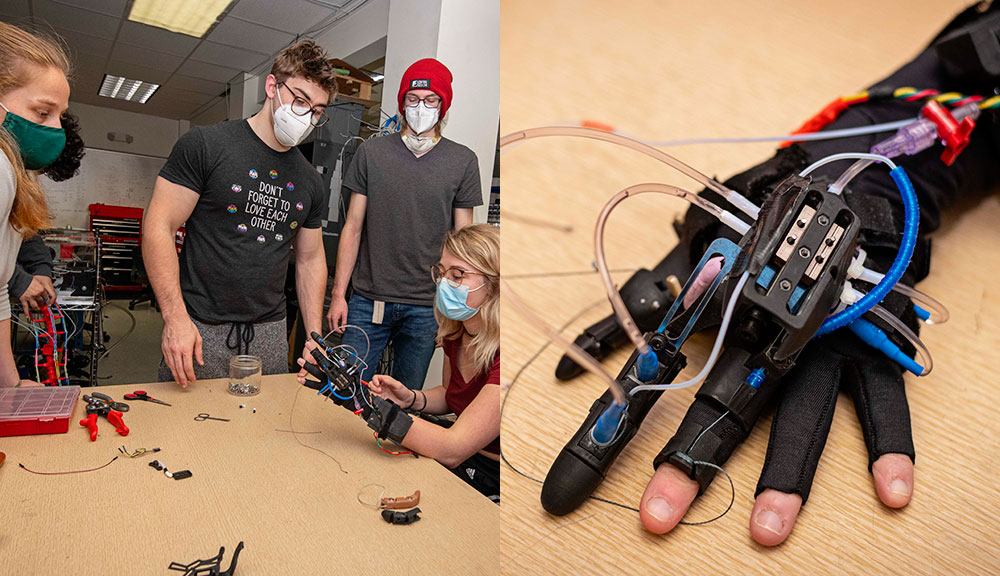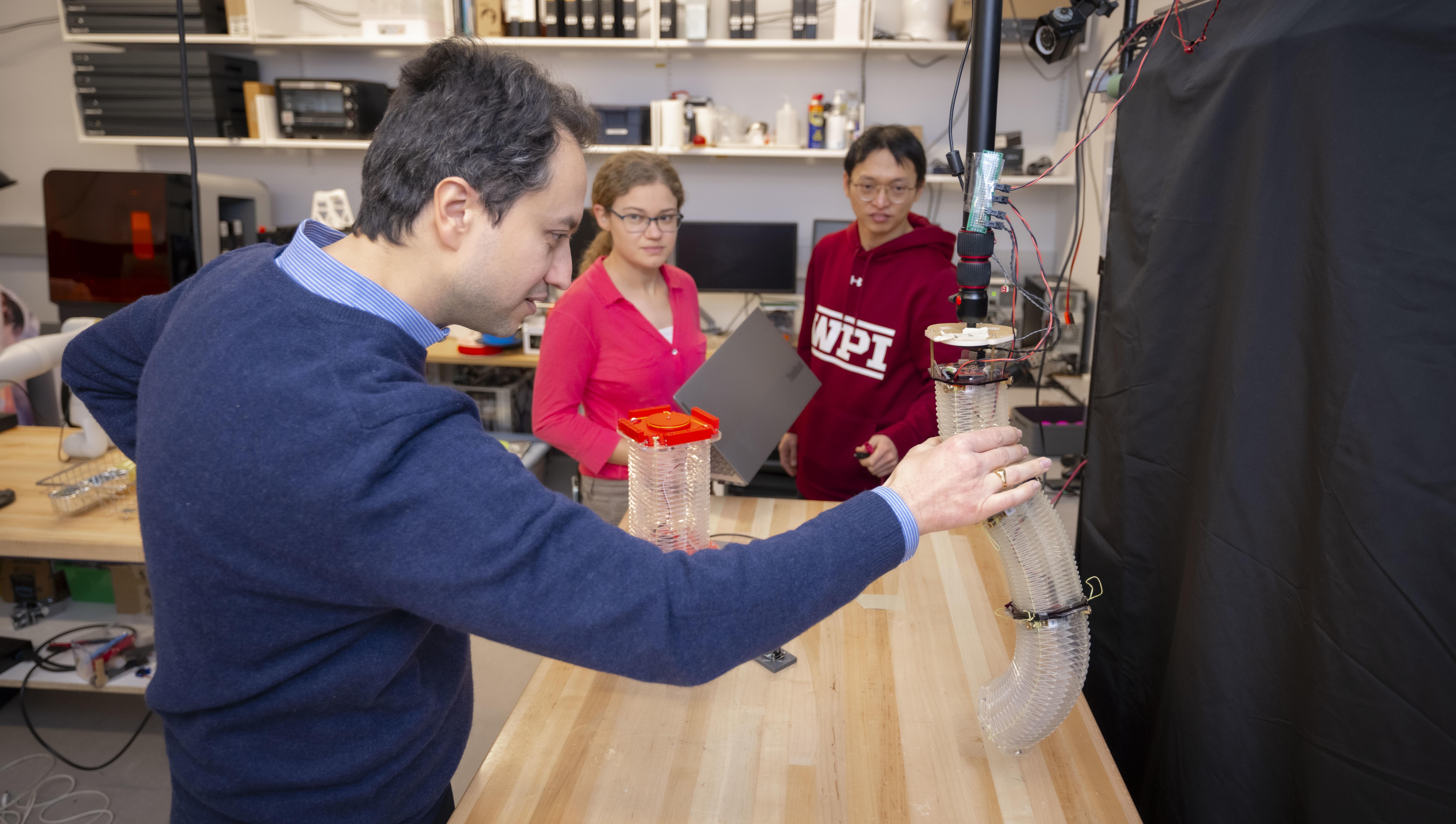A new type of computer mouse created by seniors Chris Banker, Mike Cretella, Jeff DiMaria, Jamie Mitchell, and Jeff Tucker is one of 10 inventions honored by Popular Science with the magazine's inaugural PopSci Invention Awards. The awards are the cover story in the June 2007 issue of the magazine. Created as the students' Major Qualifying project, the mouse uses an array of receivers to track the motion of a tiny ultrasonic transmitter worn on the index finger like a ring.
WORCESTER, Mass. – MagicMouse, a three-dimensional computer mouse designed by a team of five WPI undergraduates, is one of 10 inventions honored with the inaugural PopSci Invention Awards, the cover story in the June 2007 issue of Popular Science. The magazine, which has a circulation of 1.4 million, selected the mouse from among hundreds of submissions.
Developed by seniors Christian Banker (Norwich, Conn.), Michael Cretella Jr. (Monroe, Conn.), Jeff DiMaria (Prospect, Conn.), Jamie Mitchell (Worcester, Mass.), and Jeffrey Tucker (Nottingham, N.H.), in fulfillment of a WPI degree requirement, the mouse is designed to permit a computer user to control and manipulate items on a computer screen just by pointing at the monitor. The mouse uses an array of receivers to track the motion of a tiny ultrasonic transmitter worn on the index finger like a ring. The students, all electrical and computer engineering majors, were advised by Brian King, assistant professor of electrical and computer engineering at WPI.
The computer mouse was invented more than 40 years ago, and its functionality has changed little since then. The basic mouse operates in two dimensions—a user can move the cursor about the screen, but not zoom in or out. Recent developments in 3D software have tested the limits of the basic design—the addition of the scroll wheel has made zooming possible in certain applications; still, the user can not move the cursor and zoom at the same time, making it difficult to move and manipulate objects in three-dimensions.
The MagicMouse is a true 3D mouse. Users can move the cursor about the screen simply by pointing and moving their index finger. Zooming is achieved by moving the hand nearer to or farther from the screen. Since both actions can be done simultaneously, the mouse makes it possible to work easily in three dimensions to pan and zoom through 3D maps, for example, or manipulate objects in computer-aided design (CAD) drawing packages. The mouse could also make game play more realistic and interactive, much as the novel 3D remote on the new Nintendo Wii game console has done. For more routine applications, like word processing and web surfing, the WPI students note that controlling a computer with hand gestures should make computer use more intuitive and less intimidating.
The mouse was developed as the student's Major Qualifying Project, a significant design or research project that all WPI undergraduates must complete. In their final project report, the student inventors suggest that the 3D capabilities of the MagicMouse might inspire new types of computer applications. For example, the report states that the mouse could be used to train students to conduct an orchestra, or even play music, with hand motions controlling pitch, tempo, and volume. "With a new interface like this, third party developers could design new applications that would take advantage of the intuitive connection between user input and motion on the screen. This device could pave the way for a new revolution in computer input technology."
The basic principle behind the MagicMouse is called time difference of arrival (TDOA), the same principle that enables the GPS system to determine your position on Earth. Every 16 milliseconds, five receivers detect ultrasound waves emitted by a transmitter worn on the finger. Differences in the time it takes the sound waves to reach the receivers are translated into the distance between the transmitter and each receiver. Software written by the students takes those varying distances and uses them compute the exact location of the receiver in 3D space.
Making the transmitter small enough to be worn as a ring proved to be one of the student's major challenges. The final prototype is one inch square and weighs less than 10 grams; a flexible, rechargeable lithium-polymer battery forms the band of the ring, and can power the transmitter for more than two weeks of continuous use. The students also wanted to produce a prototype that not only worked well, but which could be made inexpensively. Their complete working prototype used only $155 worth of parts.
In the 21 weeks slated for this project the students could not realize all of their hopes for the device. They plan to continue working on the mouse to extend its capabilities. For example, the working prototype does not incorporate the functions of the traditional mouse buttons. The students would like to add technology that will permit the user to perform specific functions using gestures; examples include clicking by moving the finger rapidly forward and backward, and clicking and holding by moving the finger forward quickly and stopping.




